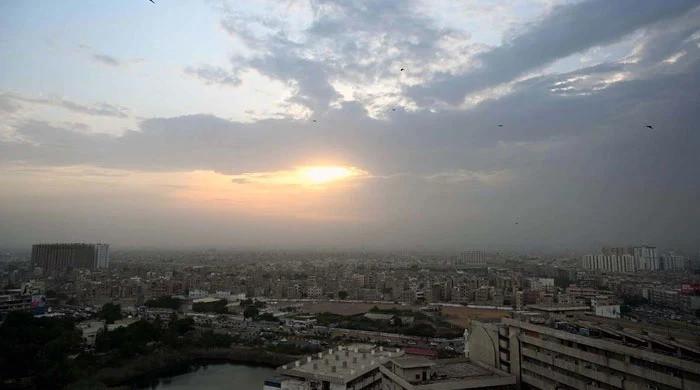Karachi Weather Forecast for Eid ul Adha
The Pakistan Meteorological Department has indicated that Karachi’s weather during the Eid ul Adha holidays is expected to be partly cloudy, with hot and humid conditions.
The city’s temperature is predicted to fluctuate between 35 and 37 degrees Celsius, with the likelihood of sea breezes providing some relief during the festive days.
The weather authority has also issued an advisory regarding strong winds on the second day of Eid, anticipating gusts that may reach speeds of 35 to 40 kilometres per hour.
Across Sindh, prevailing hot weather is expected to continue, with most areas experiencing elevated temperatures and arid conditions during the holiday period.
Earlier in the week, the Met Office had indicated that predominantly hot and dry weather conditions are anticipated across most plain regions of the country during Eid ul Adha.
Furthermore, the PMD has included a forecast of rain and thunderstorms for Dir, Swat, Chitral, Kohistan, and Mansehra during Eid.
The Met Office has cautioned that potential windstorms, hailstorms, and lightning could cause damage to vulnerable structures such as electric poles, trees, vehicles, and solar panels in the upper and central parts of the nation.
Farmers are encouraged to proactively manage their agricultural activities in consideration of the predicted weather conditions.
The PMD has recommended that the public, commuters, and tourists exercise caution and take necessary precautions in anticipation of the anticipated weather activity.
The federal government had previously declared a four-day holiday for Eid ul Adha, set to begin on June 7.
The Cabinet Division released a notification confirming that June 6, 7, 8, and 9 would be observed as public holidays for Eid ul Adha, applicable to both five and six-day work week schedules.
The first day of Zil Hajj in Pakistan was observed on Thursday, May 29, with Eid ul Adha scheduled for Saturday, June 7.
Eid ul Adha is celebrated on the 10th day of Zil Hajj, coinciding with the Hajj pilgrimage. It stands as the second major Islamic festival, following Eid ul Fitr.
The celebrations and customary observances typically span three days.
The festival, also known as the “Feast of Sacrifice,” commemorates the story from the Quran about Prophet Ibrahim’s willingness to sacrifice his son as an act of obedience to God. This test of faith was divinely averted, and a ram was provided as a substitute.
The occasion is further marked by prayers, family reunions, and charitable deeds, including the sacrificial slaughter of livestock, with the meat shared among relatives, friends, and those in need.



Comments (0)
No comments yet. Be the first to comment!
Leave a Comment